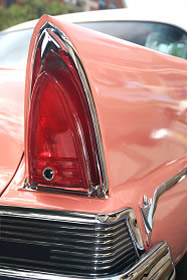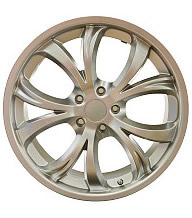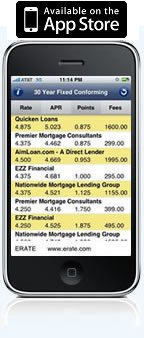Automotive Loans: Trading in a Car
by Amy Lillard
(2/15/2013) When buying a new car, trading in your current used car can be a simple way to unload an unwanted vehicle and obtain money to use towards the down payment.

However, there is one significant drawback of trading in your car to a dealer. Typically, dealers offer lower pay-outs on your car than you could obtain on your own. The reasons are many, depending on the current inventory the dealer has, the time of the month, and their own specific selling numbers (and if they're close to obtaining a bonus or other internal incentive).
But there are ways to increase the money you get for your trade in, and improve the deal you obtain overall.
• Know the facts. Dealers want to pay the least amount possible for used cars, so they will make a bigger profit when reselling the car. They will bank on car owners forgoing a higher payout for the convenience they'll receive, and offer prices that are below a car's true value. It's critical, then, to know how much your car is really worth. Do research ahead of time using the Kelley Blue Book to find how much your specific car, with your unique mileage and condition, is valued. And use this information at the dealership.
• Fix the flaws. Dirt, dings and dents can catch a dealer's attention and lower the price they're willing to pay. Put the best face forward for your car by washing inside and out, touching up paint nicks, and repairing dents. Make sure the car is up to date on routine maintenance, like oil changes, fluid top-offs, and tire pressure. The extra time and effort will increase the value of the car and the money you'll receive.
• Know your options. Most of the time, consumers will decide on the dealership where they are buying a new car, and automatically trade in their old one there. Dealers know this and bank on it, offering a low deal in part because they know you're going to take it. Instead, visit multiple dealers to get an estimate on your trade-in value. With these quotes in hand, you increase your bargaining power with dealers when offering your car.
• Consider the season. Savvy shoppers know that dealers get the next year's inventory of cars at the end of the year. They're eager to unload the previous year's models. If you're looking at one of these models, dealers are likely to offer you both a better deal on the new car and a higher price for the trade in.
With these tips, you'll be in a better bargaining position with your car, and more likely to obtain a better price during the trade in process.
For Additional Reading:
10 Cars to Trade In Now for Maximum Value:
http://www.forbes.com/sites/jimgorzelany/2012/01/12/10-cars-to-trade-in-now-for-maximum-return/
Trading in a Used Car:
http://www.dmv.org/how-to-guides/trade-ins.php
Other related articles:
Automotive Loans: Trade In or Sell a Car?
Automotive Loans: What Laws Protect Car Buyers?
Automotive Loans: Determining a Down Payment
Automotive Loans: The Truth About "Add-Ons"
Automotive Loans: Negotiating a Loan with a Dealer
Automotive Loans: How Much Car Can You Afford?
Automotive Loans: Buying Vs Leasing
Automotive Loans: Applying for a Car Loan
Avoid advertised auto trade-in, loan pay-off rip-offs
Auto sales, loans hit the speedway
High MPGs and low auto loan rates can save you thousands of dollars
Research your options when shopping for an auto loan
How to drive a hardauto loan bargain
Special Report: Hitting the Brakes on Auto Dealer Loans

Automotive Loans: Trading in a Car
Automotive Loans: What Laws Protect Car Buyers?
Automotive Loans: Trade In or Sell a Car?
Automotive Loans: Is Zero Percent Financing Really Possible?
Automotive Loans: Determining a Down Payment
Automotive Loans: The Truth About "Add-Ons"
Automotive Loans: Top 5 Mistakes When Buying a Car
Automotive Loans: Shopping Online
Automotive Loans: Dealer Incentives to Buy
Automotive Loans: Car Buying Incentives
Automotive Loans: Should You Buy New or Used?
Automotive Loans: What to Know About Interest Rates
Automotive Loans: Negotiating a Loan with a Dealer
Automotive Loans: How Much Car Can You Afford?
Automotive Loans: Understanding Typical Loan Language
Automotive Loans: Types of Financing
Automotive Loans: Buying Vs Leasing
Automotive Loans: Applying for a Car Loan

Buying a Car: Standard and Extended Warranties
Car Buying: Financing Background and Steps
Leasing a Car: Two Types of Leases - Closed & Open
Buying a Used Car: Two Options
Buying a Car: 5 Steps to Find the Perfect Deal
Automobile Buying/Financing

5 Steps to Find the Perfect Car
Auto loan defaults to rise 7 percent in 2010
Auto Show Season Tips for Buyers
When is the Best Time to Buy a New Car?
Making a Vehicle Purchase? Enjoy These Helpful Tips
Chances are, your next car will be used. Drive a hard bargain
What your car is really saying
2012 President's Day auto sales among best ever
Special Report: Hitting the Brakes on Auto Dealer Loans
Auto Insurance
Buying Ins - Shopping for Insurance
Best Car Insurance Plan for You


